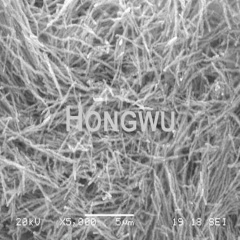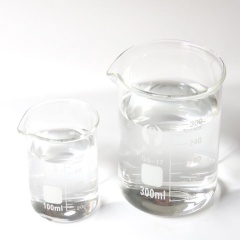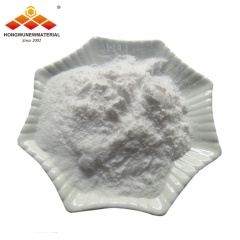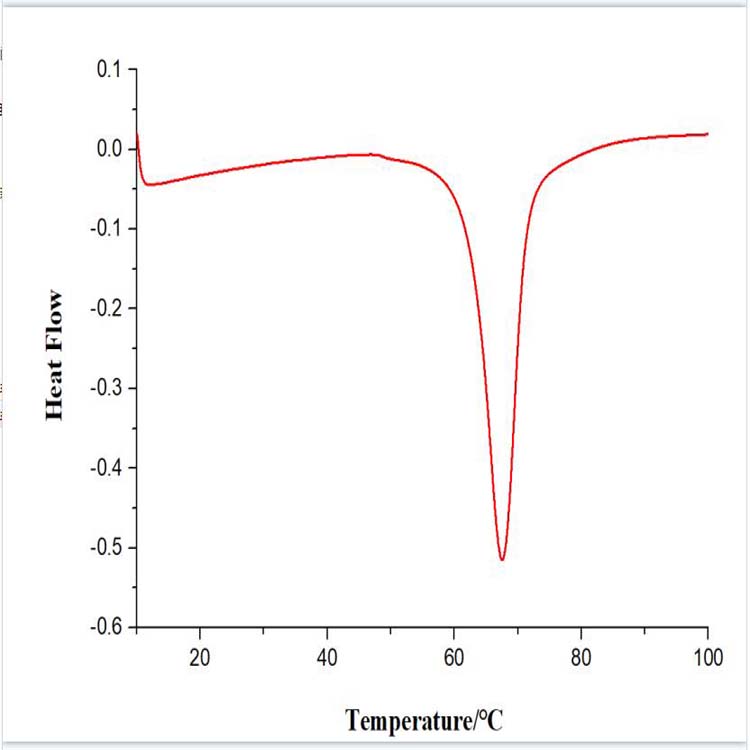I. Overview of Nanocomposite Zirconia
Zirconium oxide (ZrO2) is an inorganic non-metallic material with high temperature resistance, corrosion resistance, wear resistance and low coefficient of thermal expansion. It is naturally present in the form of monoclinic phase oblique zircon. Under normal circumstances, ZrO2 has three crystal forms and is a polycrystalline phase-converting oxide. At room temperature, it is a monoclinic phase. When it is higher than 1000°C, the tetragonal phase gradually forms until there is only a tetragonal phase at 2370°C, and a temperature higher than 2370°C to the melting point is a cubic phase.
In general, zirconium oxide, which can maintain a tetragonal or cubic phase at room temperature after addition of a stabilizer, is referred to as a composite zirconia or composite zirconia powder, and is also referred to as semi-stabilized and stabilized zirconia. Common stabilizers are Y2O3, CeO, CaO.
II. The performance of nano-composite zirconia
1. physical properties: high strength, high temperature, wear, self-lubricating, insulation, insulation, expansion coefficient can be adjusted.
2. chemical properties: anti-corrosion, high oxygen ion conductivity.
3. nano-performance: large surface area, strong oxygen storage capacity.
III. The application of nano-composite zirconia
Nano-zirconia is characterized by resistance to chemical attack and micro-organism erosion. It is a ceramic material doped with metal oxides that is acidic, alkaline, oxidative, and reducible. After being doped with a stable zirconium oxide, it is mechanically, thermally, and electromagnetically. Optical and optical properties also have good properties, and they also have important applications in catalytic properties.
1. denture material
Nano-ZrO2 can significantly increase the room temperature strength and stress intensity factor of the ceramic, so that the ceramic toughness can be doubled. The composite bioceramic material prepared by nano-ZrO2 has good mechanical properties, chemical stability and biocompatibility, and is a promising bioceramic composite material, especially in dental materials and artificial joints. As an excellent bio-inert ceramic, it exhibits excellent chemical stability both as a prosthesis and an implant, and it fully satisfies the standard of a dental restoration material.
2. oxygen sensor
The sensor made of zirconia has good conductivity and plays an important role in controlling the exhaust of the automobile and the combustion of the power plant boiler. Zirconia oxygen sensor is the most mature and most productive oxygen sensor. It is one of the key components in the vehicle emission control system. Its signal output characteristics directly affect the fuel economy and emission control of the engine.
3. automobile exhaust gas purification catalyst additives
Automotive exhaust gas purification catalysts generally consist of three components: carriers, cocatalysts, and catalysts. Among them, zirconium and hafnium solid solution composite oxide materials are used as co-catalysts and are very important coating materials. In addition, zirconium and hafnium solid solutions are also widely used in sensor materials, polishing materials, fuel cells, structural materials, high-strength ceramics and other fields.
4. optical fiber connector ceramic ferrule
Nano-YSZ powders can be used to fabricate rare-earth ceramic fiber ferrules (precision needles) for optical fiber connectors because of their excellent mechanical properties, chemical stability, and extremely high precision. Sleeve is the most widely used optical fiber passive device in optical fiber network and is an important part of information network infrastructure construction.
5. mobile terminal products
With the advent of new transmission methods such as 5G and wireless charging, the wireless frequency band is becoming more and more complex, and metal chassis shielding will become a major bottleneck. The 5G antenna, which is strictly required for layout, needs to change the existing metal casing material. Ceramics and glass will become optional solutions. At the same time, metal materials are also very unfriendly for wireless charging technology. Because most of the current wireless charging technologies use electromagnetic wave raw materials, metal can cause interference to electromagnetic waves, which greatly reduces the charging efficiency. Alternative materials include plastics, glass, and ceramics. Plastics are prone to scratches and glass is fragile. Ceramic materials are gradually penetrating into the appearance of smart phones due to their excellent physical properties.
6. crucible
In the smelting of rare and refractory precious metals and alloys, due to the need to heat to a higher temperature, the general material is difficult to meet the requirements, and the crucible made of zirconia can be heated to 2430oC. Zirconia becomes the preferred material for the crucible used under high temperature conditions.
7. special tools
Ceramic cutters were used in the early 20th century, but their use was limited by their brittleness. In recent years, with the advancement of nano-composite zirconia composite materials, its toughness has greatly improved. Ceramic knives have expanded from industrial aerospace and other high-tech fields to industrial ceramic knives and are now widely used in daily life. Zirconium oxide can be processed into various kinds of tools. It has the advantages of traditional metal tools, but also has the advantages of no rust, health, wear resistance, etc., known as ceramic steel.
8. fuel cell
Zirconium-based electrolytes for solid oxide fuel cells are the most widely used and most studied electrolyte materials in SOFC. The cubically stabilized ZrO2-based electrolyte material has a very large ionic conductivity, maintains good chemical stability at high temperatures, in oxidizing and reducing atmospheres, and has pure oxygen ion conducting properties over a wide range of oxygen partial pressures, while having Due to its good mechanical processing strength, it can be made into a dense membrane electrolyte. Therefore, it satisfies almost all requirements of solid oxide fuel cells and becomes the first choice for the preparation of SOFC electrolytes. It is the core component of solid oxide fuel cells.
9. special mechanical parts
The brittleness of ceramic materials limits its application development. Nano-ceramics are a very important way to solve the brittleness of ceramics. Experiments have shown that ZrO2 tetragonal phase can be transformed into a monoclinic phase to generate micro-cracks and residual stresses to toughen ceramics. Nano-ZrO2 can significantly increase the room temperature strength and stress intensity factor of the ceramic, so that the ceramic toughness can be doubled. Special ultra-tough nano-composite zirconia is widely used in bearings, bushings, ball bearings, housings and other fields.
10. Refractory materials
Due to its high melting point, low thermal conductivity, and stable chemical properties, zirconia is commonly used as a refractory material. Refractories made from nano-zirconia have more obvious advantages, high temperature resistance (up to 2200°C), high strength, good thermal insulation, and excellent chemical stability. They are mainly used in environments with operating temperatures above 2000°C.


 English
English français
français Deutsch
Deutsch русский
русский italiano
italiano español
español português
português 日本語
日本語 한국의
한국의 Türkçe
Türkçe
















 8620-87226359,8620-87748917
8620-87226359,8620-87748917

